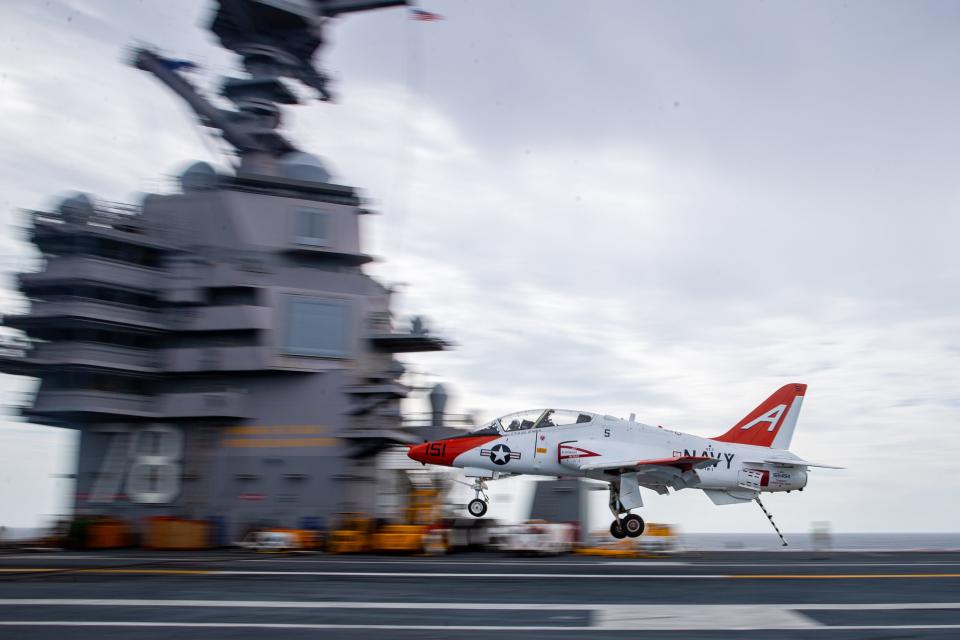A new video shows the testing of the aircraft launch system for the Navy’s next supercarrier.
The testing involves loading heavy wheeled vehicles onto the catapults and launching them into a river.
The USS John F. Kennedy is the Navy’s second Ford-class aircraft carrier.
A new video from a shipbuilder captures catapult testing on the US Navy’s next supercarrier and shows heavy carlike vehicles being launched into the James River in Virginia.
The testing is designed to evaluate the onboard catapults and ensure that the aircraft carrier is ready to launch actual fixed-wing aircraft, from fighter jets such as the F/A-18 Super Hornets to early-warning planes including the E-2 Hawkeye.
The video, published last week by Huntington Ingalls Industries, shows the company’s Newport News Shipbuilding division conducting “dead-load” testing on the USS John F. Kennedy’s electromagnetic aircraft launch system.
This phase, the shipbuilder said, involves launching “large, wheeled, car-like structures of graduated weights up to 80,000 pounds to simulate the weight of actual aircraft” off the top side of the Kennedy and into the water below.
The vehicles travel more than 300 feet down the track at more than 150 mph, simulating an aircraft’s launch. But unlike a plane, they hit the water, sometimes with a skip, like a smooth stone on a river.
The cars are then retrieved from the water and relaunched until the conclusion of the tests, which “ensure the catapults are ready for their primary intended purpose: to launch all carrier-based fixed wing aircraft flown by the US Navy,” HII said in a statement.
During this testing process, the wheeled vehicles launched were covered in messages of encouragement and congratulations from the families of the shipbuilders.
The recent catapult testing, a key part of getting a carrier ready, is a significant step in the Kennedy’s progress.
The Kennedy, the second Ford-class supercarrier, was named after a one-of-a-kind carrier. It was launched in 2019 after more than a decade of design, development, and construction, and it cost over $11 billion, notably less than the Ford’s substantial $13 billion price tag.
After the USS Gerald R. Ford, the Kennedy is only the second US Navy aircraft carrier to feature the new electromagnetic aircraft launch system, a more efficient mechanism for launching fixed-wing aircraft more effectively than its steam-powered predecessors aboard Nimitz-class carriers.
Problems with this system, along with some other new technologies aboard Ford-class carriers, contributed to inflated costs and delayed developments with the first ship. While the new capabilities make Ford-class supercarriers the crown jewels of the US Navy’s carriers, the service branch has acknowledged missteps in their development, while emphasizing that it has learned from those mistakes.
When the USS Gerald R. Ford was on its first full deployment last year, one official said: “There were a handful of new technologies that, frankly, took longer than we estimated, and this will not be the norm.” The official added that “you will not see another six-year interval between the delivery of” the next Ford-class carrier “and its deployment, and we should never do that again.”
Two other Ford-class aircraft carriers, the Enterprise and the Doris Miller, are under construction at Newport News.
Read the original article on Business Insider
Credit: Source link




